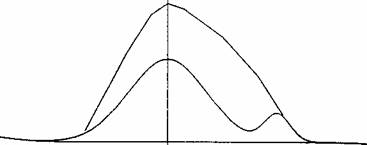
Drevo Dinastiya Romanovih
Daily 0.64 Daily 0.64 0.64. Izvor rodbine. Romanovi izhajajo iz stare bojarske rodbine. Prvi poznani prednik Romanovih, Andrej Ivanovič Kobyla, je bil v 14. Stoletju bojar na dvoru moskovskih velikih knezov (leta 1347 je bil omenjen v dokumentu velikega knez Simeona Ivanoviča). Rodbina se je kasneje delila na veliko vej.
Contents • • • • • • • • • • • • • • • • • • • • • • • Surname usage [ ] Legally, it remains unclear whether any ever abolished the surname of Michael Romanov (or of his subsequent male-line descendants) after his accession to the Russian throne in 1613, although by tradition members of reigning dynasties seldom use surnames, being known instead by dynastic titles ('Tsarevich Ivan Alexeevich', 'Grand Duke Nikolai Nikolaevich', etc.). From January 1762 [ December 1761], the monarchs of the claimed the throne as relatives of (1708-1728), who had married. Thus they were no longer Romanovs by, belonging instead to the Holstein-Gottorp of the German that reigned in Denmark. The 1944 edition of the records the name of Russia's ruling dynasty from the time of Peter III (reigned 1761-1762) as 'Holstein-Gottorp-Romanov'. However, the terms 'Romanov' and 'House of Romanov' often occurred in official references to the Russian imperial family. The coat-of-arms of the Romanov was included in legislation on the imperial dynasty, and in a 1913, Russia officially celebrated the '300th Anniversary of the Romanovs' rule'.
After the February Revolution of March 1917, a special decree of the granted all members of the imperial family the surname 'Romanov'. [ ] The only exceptions, the descendants of the (1891-1942), took (in exile) the surname. House of Romanov [ ]. A 16th-century residence of the Yuryev-Zakharyin boyars in, near The Romanovs share their origin with two dozen other Russian noble families. Their earliest common ancestor is one, attested around 1347 as a in the service of.
Ral katalog cvetov kupitj. Visit colorral.ru now to see the best up-to-date Color RAL content for Russia and also check out these interesting facts you probably never knew about colorral.ru We analyzed Colorral.ru page load time and found that the first response time was 476 ms and then it took 19.1 sec to load all DOM resources and completely render a web page. RAL CATALOGUE RAL 1000 RAL 1001 RAL 1002 RAL 1003 RAL 1004 RAL 1005 RAL 1006 RAL 1007 RAL 1011 RAL 1012 RAL 1018 RAL 1024 RAL 1019 RAL 1027 RAL 1020 RAL 1028 RAL 1021 RAL 1032 RAL 1023 RAL 1033 RAL 1034 RAL 1013 RAL 1014 RAL 1015 RAL 1016 RAL 1017 Actual colours may vary from displayed or printed images This is only a sample of the colours selection available. Color RAL content, pages, accessibility, performance and more.

Rabota policejskogo v gta san andreas 5. Later generations assigned to Kobyla an illustrious. An 18th-century claimed that he was the son of the prince Glanda Kambila, who came to Russia in the second half of the 13th century, fleeing the invading. Indeed, one of the leaders of the rebellion of 1260–1274 against the was named Glande. This legendary version of the Romanov's origin is contested by a more plausible version of their descent from a boyar family from Novgorod. His actual origin may have been less spectacular. Not only is Kobyla Russian for ', some of his relatives also had as nicknames the terms for horses and other domestic animals, thus suggesting descent from one of the. [ ] One of Kobyla's sons,, a member of the boyar of, was nicknamed Koshka ('cat').
His descendants took the surname Koshkin, then changed it to Zakharin, which family later split into two branches: Zakharin-Yakovlev and Zakharin-Yuriev. During the reign of, the former family became known as Yakovlev ( among them), whereas grandchildren of [] changed their name to 'Romanov'. Rise to power [ ] The family fortunes soared when Roman's daughter,, married (the Terrible), the Grand Prince of Moscow, on 3 (13) February 1547. Since her husband had assumed the title of, which literally means ', on 16 January 1547, she was crowned the very first of Russia. Her mysterious death in 1560 changed Ivan's character for the worse. Suspecting the boyars of having poisoned his beloved, Tsar Ivan started a against them.